人教版高中英语必修二第四单元 Unit 4 Book 2 Wildlife Protection reading
- 格式:ppt
- 大小:1.22 MB
- 文档页数:22
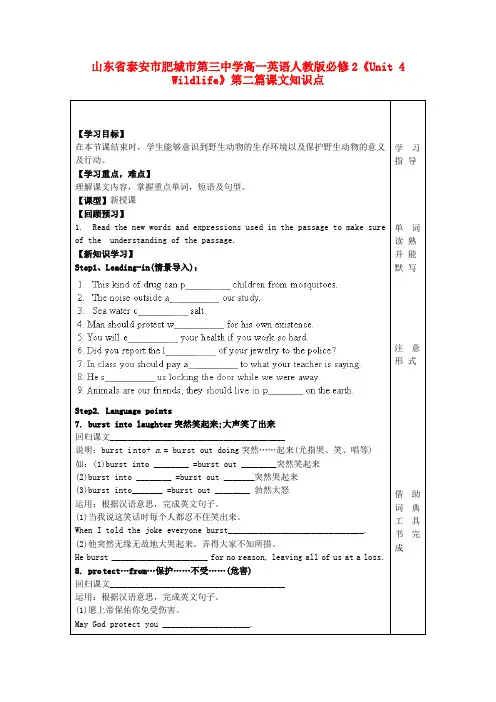

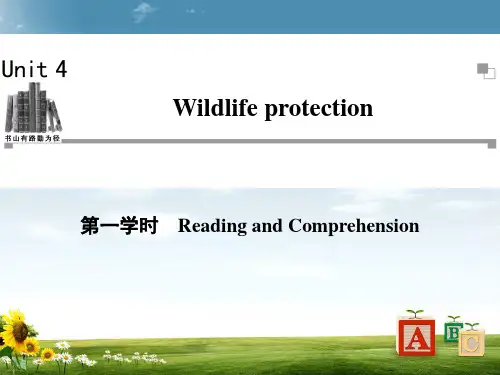
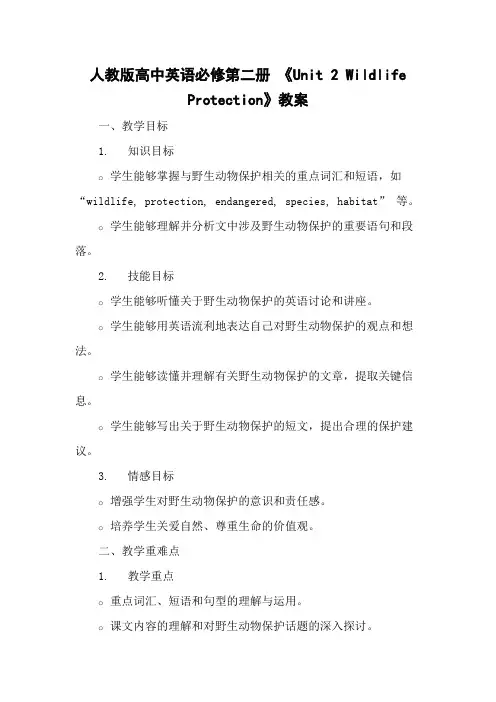
人教版高中英语必修第二册 《Unit 2 WildlifeProtection》教案一、教学目标1.知识目标o学生能够掌握与野生动物保护相关的重点词汇和短语,如 “wildlife, protection, endangered, species, habitat” 等。
o学生能够理解并分析文中涉及野生动物保护的重要语句和段落。
2.技能目标o学生能够听懂关于野生动物保护的英语讨论和讲座。
o学生能够用英语流利地表达自己对野生动物保护的观点和想法。
o学生能够读懂并理解有关野生动物保护的文章,提取关键信息。
o学生能够写出关于野生动物保护的短文,提出合理的保护建议。
3.情感目标o增强学生对野生动物保护的意识和责任感。
o培养学生关爱自然、尊重生命的价值观。
二、教学重难点1.教学重点o重点词汇、短语和句型的理解与运用。
o课文内容的理解和对野生动物保护话题的深入探讨。
2.教学难点o如何引导学生用英语准确、流畅地表达对野生动物保护的复杂观点。
o帮助学生理解一些较难的专业术语和长难句。
三、教学方法1.任务型教学法:通过布置各种任务,引导学生在完成任务的过程中学习和运用知识。
2.讨论式教学法:组织学生进行小组或全班讨论,激发学生的思维和表达能力。
3.多媒体辅助教学法:利用图片、视频等多媒体资源,增强教学的直观性和趣味性。
四、教学过程(一)导入(5 分钟)1.播放一段有关野生动物的精彩视频,展示野生动物的美丽和多样性。
2.提问学生:What did you see in the video? Why do we need to protect wildlife?(二)词汇和短语学习(10 分钟)1.展示本单元的重点词汇和短语,结合图片和例句进行讲解。
2.进行词汇小测试,如单词拼写、词义匹配等,检查学生的掌握情况。
(三)阅读前准备(5 分钟)1.让学生看课文标题和图片,预测文章内容。
2.提出一些引导性问题,如:What might be the problems faced by wildlife? How can we protect them?(四)课文阅读(15 分钟)1.学生快速阅读课文,概括文章主旨。
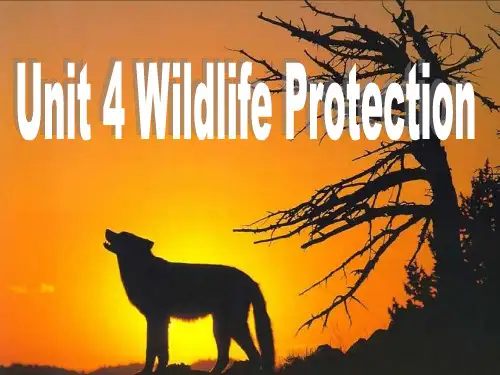
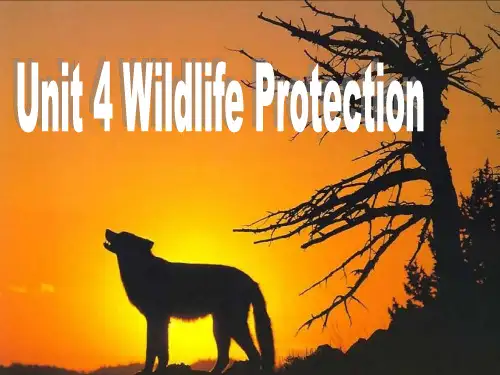
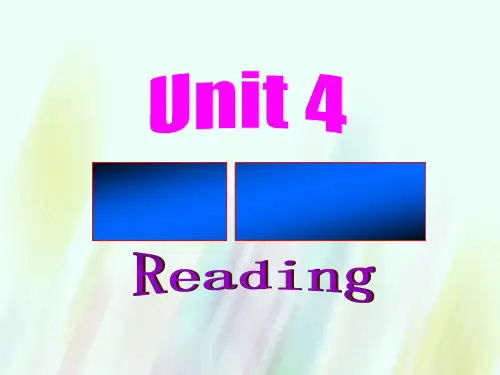
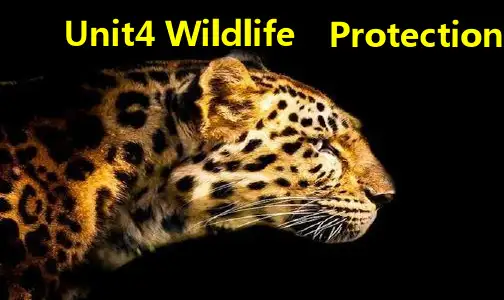
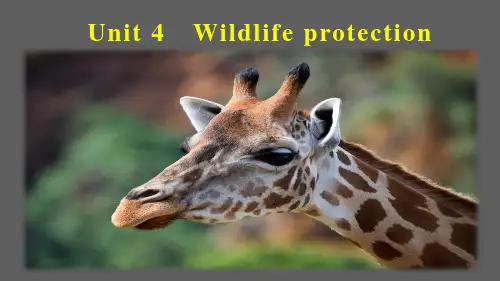


Unit 4 Wildlife Protection课型:SpeakingTopic: Wildlife ProtectionThe General Idea of This Period: This period includes Warming-up and Speaking. It introduces the wildlife situation and let the students discuss the wildlife its protection. Students will realize the necessity of wildlife protection and learn about how to protect them. Meanwhile, students can do some speaking exercise. Teaching Aims:1. Train students’ speaking ability.2. Learn more about the endangered animals and wildlife protection.Important Points:1.Help students to realize the importance and understand the ways of wildlife protection2.Train their speaking skills.Difficult PointsImprove student s’ speaking skills.Teaching Methods:1. Task-based method2. DiscussionTeaching Aids:A multimediaTeaching Procedures:Step 1 Warming-up and Oral Exercise1. Greeting the students as usual2. Ask students to turn to Page 96 New Words of Unit 4 and do the Oral Exercise(咬牙切齿).3. After the oral exercise, students read the words again as they usually do.Step 2 Revision1. Ask students to close their books and show them some English words of this unit. Then students give the Chinese meaning.2. Show some Chinese words and students give the English words.Step 3: Lead—in1. Show pictures of Beijing Olympics mascotsT: Do you know them?S: Yeah! They are “Fu Wa”.T: Very lovely, right?. And we have met them in Unit 2 the Olympic Games. Can you tell me who are they?Ss: Yes! They are Bei bei, Jining, Huanhuan, Ying ying and Ni ni.T: And what are they?Ss: Panda, swallow, fish, flame and Tibetan antelope,T: Great! As we know, all of them except Huan huan belong to wildlife.2.Introduce the definition of “wildlife”.T: And do you know what does “wildlife” mean?(Ss Discuss and show their opinions.)(T gives a completed definition of “wildlife”: wildlife means animals and plants living in natural conditions)3. Show the topic of Unit 4 Wildlife Protection.T: And, today, we are going to learn something about Wildlife protection, which is also the topic of Unit 4.Step 4: Presentation1.Game “Who am I?”T: If we want to understand “Wildlife protection”. Well, it is necessary for us toknow some basic information of the wildlife, such as the situation they facing. First, look at these pictures about the wild animals and tell me what are they.(T shows the pictures one by one, including these of crocodile, koala, dolphin, kangaroo, giraffe, leopard, zebra and so on. Students compete in telling their names.)2. Game “Pick me out”T: So, you do know some things about the wild animals. And can you tell me the difference between the wild animals and the poultry? Yeah, the poultry are kept by human beings. Now, we are going to play a game called “Pick me out”. I’ll show you 5 lines words. There are 6 words 12 every line, one of which doesn’t belong to “wild animals” and you should pick it up. Understand?(Ss can also compete in doing this game. )Step 5: SpeakingTask One1. Presentation1) Show some pictures of the dying-out wild animals appearing in the Games “Who am I?” and “Pick me out.” And ask students to discuss ” What other kinds of wild animals are dying out?” and “why are they facing such a situation?”2) Students discuss with their partners.3) Teacher shows more pictures and concludes the reasons, such as too much hunting, lacking of food and so on.4) Warming-up in Page 26 of Book IIMatch up the information about pandas, tigers and Milu deers. Then, teacher gives students some useful expressions. Introduce the WWF and ask students to imagine that they are scientists of it and make short reports, which should tell people the situations of them, the numbers of them before and after protections having been taken. And what are the protections.5)Students prepare for the speaking by themselves and make reports in class.Task Two: Wildlife Protection.1.Discuss why should we protect wildlife and how can we do.2. Students share their ideas with others. And then speak out loudly. Encourage them to give different pinions.3. Teacher draws a conclusion.Step 6:Game “Just for fun!”Give students the words: horse, pig, bee, donkey, church mouse, swan and so on. Ask them to complete some usage expressions of English. And tell students some different opinions of animals between Chinese people and some Western people. Introduce some cultural information.eg: T: Do you know as happy as a what? Horse? No! Bee? Oh, no! Swan? Also no! Yeah! It is pig! As happy as a pig! Wonderful!Step 7: ConclusionShow a picture, in which the human being live in harmony with the doves. And draw the conclusion that “We human beings can and should live in harmony with wildlife, which means enjoying our lives.”Homework:1. Make a poster “Wildlife Protection” in groups. There can be a competition among different classes. And the good work will be showed.2. Preview the Reading text. And find out the main idea of it.3. You an visit the following website to find out more information about wildlife protection.。